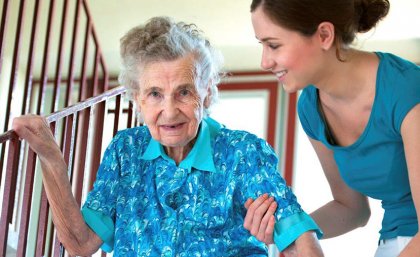
Money might not guarantee happiness, but it could buy you physical health in older age, new University of Queensland research shows.
Dr Paul Gardiner, a Research Fellow with UQ’s Centre for Research in Geriatric Medicine, looked at the relationship between socio-economic status in later life and frailty in women, using data from the Australian Longitudinal Study of Women’s Health.
The term ‘frailty’ is used to describe a collection of conditions in older people and was measured by deficits relating to fatigue, strength, mobility, illness and weight loss.
Dr Gardiner said that women who struggled to manage on their income later in life were up to three times more likely to be frail than women on more stable incomes.
“Our study looked at women over a 12-year period. These women were aged from 73 to 78 years of age at the start of data collection and were 85 – 90 years of age by the end of that time,” he said. .
“We found that one in five women remained free of frailty over the entire time, while 41 per cent of women were not frail at the beginning of the study, but had increasing frailty as time went on.
“The remaining 40 per cent of women experienced high frailty and were categorised as frail from the beginning to end of the study.
“We found that women who had trouble managing on their income were three times more likely to be in this group, suggesting this plays a role in determining whether a woman will be frail in later life.”
With frailty leading to falls, hospitalisation, disability and death, Dr Gardiner said his study could help health professionals understand which groups of women were most likely to be frail in later life – allowing them to put measures in place to counter the risk.
“While studies previous to ours have reported an association with education, our study found this disappeared once socioeconomic status later in life was taken into account,” he said.
“Therefore, health professionals working with women as they age should consider late-life socio-economic status as well as biological factors when looking for predictors of frailty.
“By understanding who is more likely to be frail, it may be possible to identify women for targeted interventions to prevent some of the negative outcomes.”
The research is published in The Journal of the American Medical Directors Association.
The Australian Longitudinal Study on Women’s Health (ALSWH), now in its 20th year, is a long-running study funded by the Australian Government Department of Health to provide evidence to develop and evaluate policies to lead to better health for all Australian women.
Media: Dr Paul Gardiner 0401 802 534; ALSWH Communications, Kim Lyell, k.lyell@uq.edu.au, 07 3365 5514.
.jpg)









